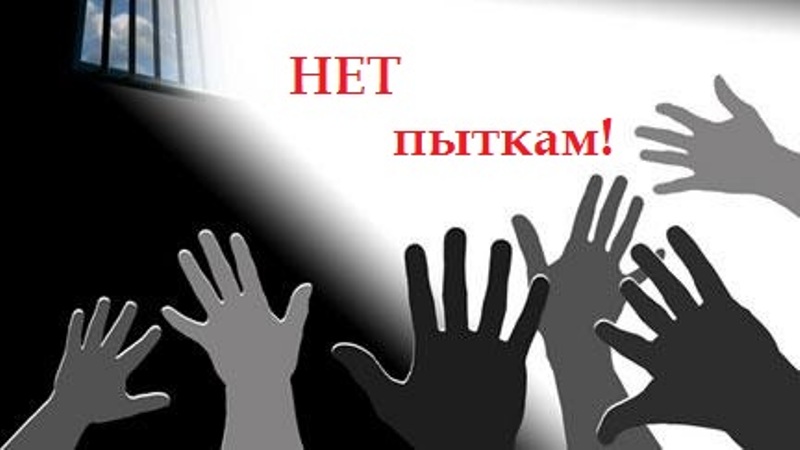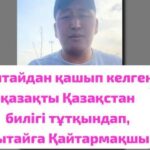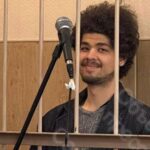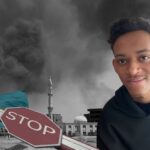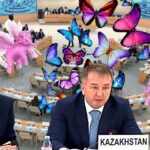Almaty, Bishkek, Brussels, Dushanbe, Paris, Vienna, Warsaw: 26 June 2019
One night in July 2018 police officers drove up to Shahboz Ahmadov’s house in the southern Yavan district of Tajikistan and instructed the young man to accompany them to the local police station to help them solve a crime. But when they arrived they reportedly took him to an office, closed the door, accused him of injuring a person with a knife, kicked and beat him and gave him electric shocks until he confessed. After holding Shahboz Ahmadov in police detention for several days the victim of the stabbing told the officers that Shaboz was not the perpetrator. The officers let him go but warned him to keep silent about the torture. But Shahboz went for a forensic medical examination and filed a complaint with the Prosecutor General’s Office. Initially, an investigation was opened and two of the alleged perpetrators were charged. But the investigation was flawed and prosecutors closed the case. The perpetrators have not been punished and Shahboz has not obtained justice for his suffering.
Sadly, cases like Shahboz Ahmadov‘s are common in all Central Asian states, although, unlike him, many innocent individuals are charged and convicted based on confessions extracted under duress; and numerous victims of torture and their relatives do not lodge complaints for fear of reprisals by the perpetrators and give up all hope of obtaining justice through the criminal justice system. Often, only when a person dies as a result of torture do the relatives speak out.
In 2018 Central Asian NGO coalitions against torture recorded 143 new cases involving allegations of torture and other forms of ill-treatment in Kazakhstan, 377 in Kyrgyzstan and 44 in Tajikistan. Both in Uzbekistan and in Turkmenistan no independent NGOs working on torture have been able to register and due to the repressive nature of the regimes it has been impossible for activists to compile reliable nationwide statistics.
Today is the United Nations (UN) International Day in Support of Victims of Torture. And on this day we renew our call to Central Asian governments to live up to the principles and the spirit of the UN Convention against Torture. All five Central Asian countries have now been parties to the Convention against Torture since the late 1990s. Over two decades later, why are the brutal practices of torture and ill-treatment still widespread?
For many years local and international human rights groups have regularly drawn attention to torture and much has been achieved. Civil society groups have supported hundreds of victims in their struggle for justice, formulated policy recommendations, tried to engage in dialogue with domestic policy makers and advocated for change in international human rights fora. It is largely thanks to these efforts that several dozen victims have attained justice and the perpetrators have been punished; and that there have been precedents in Kazakhstan, Kyrgyzstan and Tajikistan when victims of torture or families of deceased victims have received some compensation for moral damages. Central Asian NGOs have also provided much needed rehabilitation services for victims of torture and their relatives, particularly in Kazakhstan, Kyrgyzstan and Tajikistan.
Important progress has been achieved in strengthening legislation against torture in all five countries, but all too often legal safeguards are not implemented and officials who fail to adhere to them are not held to account. Kazakhstan and Kyrgyzstan have made some progress by allowing public oversight over detention facilities and setting up National Preventative Mechanisms (NPMs), although problems remain such as insufficient financial resources of the NPM in both countries. Tajikistan has allowed limited monitoring of detention facilities through the Ombudsman’s Office. In Kyrgyzstan and Tajikistan significant efforts have been made to integrate the standards of the Istanbul protocol into the work of medical doctors examining victims of torture.
But in order to put a definitive end to torture and ill-treatment the authorities have to publicly acknowledge the true extent of the problem, publish comprehensive statistics on cases and investigations, allow independent monitors full access to detention facilities, and address entrenched systemic problems. The judiciary in all five countries is not independent and both in law and practice, the defendant’s position is notoriously weak compared to that of the prosecution. Law enforcement and prison officials often prevent lawyers from visting their clients and speaking with them in confidence. Victims, lawyers and human rights defenders risk reprisals by law enforcement agencies when raising allegations of torture and are left vulnerable, with no functioning mechanisms of protection. Not one of the countries has put independent mechanisms in place to investigate allegations of torture; conflicts of interest prevent investigations being effectively carried out, cause major delays and lead to cases being closed, often in spite of glaring evidence of abuse. Medical doctors who examine victims of torture frequently come under pressure by law enforcement agencies for recording injuries inflicted through torture and other evidence, and not one of the Central Asian countries accepts or gives due consideration to the conclusions of independent forensic medical or psychiatric experts in court. Police officers lack the skills to professionally investigate crimes and typically get away with extracting confessions and fabricating evidence under duress. Successfully combating torture also requires tackling corruption in the criminal justice system as officials frequently exploit the vulnerability of suspects and detainees for their personal gain.
For further information on concerns, recommendations and individual cases of victims of torture, please refer to the following documents:
- Kazakhstan: Commentaries of the Kazakhstani NGOs Coalition on UPR with respect to the Implementation of Recommendations by Kazakhstan based on the Results of the Consideration of the Second Periodic Report of Kazakhstan within the Framework of the UPR, April 2019
- Kyrgyzstan: Protection of fundamental rights in Kyrgyzstan. Briefing paper ahead of EU-Kyrgyzstan human rights dialogue, May 2019
- Tajikistan: Joint NGO submission to the United Nations Human Rights Committee ahead of the consideration of Tajikistan’s Third Periodic Report at the 126th session in July 2019, NGO Coalition against Torture and Impunity in Tajikistan, International Partnership for Human Rights, Helsinki Foundation for Human Rights, June 2019
- Turkmenistan: Submission for the UN Universal Periodic Review (UPR) of Tajikistan, Turkmen Initiative for Human Rights, Human Rights Watch, International Partnership for Human Rights, October 2017
- Uzbekistan: Committee against Torture. Written information prior to the 66th session – adoption of the List of Issues, Association for Human Rights in Central Asia and International Partnership for Human Rights, January 2019


